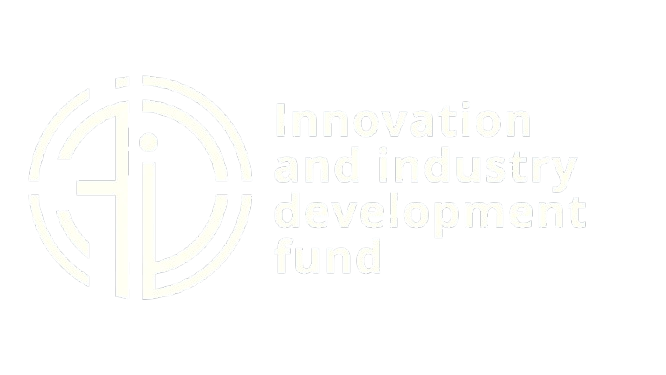
Automation in Practice: How Digital Technologies Are Changing Public Administration
This section provides specific examples from various public sectors, illustrating how automation has been successfully implemented to solve specific problems and deliver tangible benefits. Each case study highlights a problem, the automation solution, and the results achieved.
Administration and Registry: Goodbye, Paper!
Imagine mountains of paper documents, long queues, and constantly changing laws that are impossible to keep track of. This is what many administrative and registry systems used to look like. Manual processes led to errors, high costs, and most importantly, citizen dissatisfaction.
The solution: Digital registries and Robotic Process Automation (RPA) came to the rescue.
Illustrative examples:
- New Zealand completely digitized its business registry, making it convenient and fast for users.
- Ontario integrated various business services into a single, seamless, and efficient digital registry system.
- Bermuda saw an increase in the number of new businesses thanks to a digital registry system that simplified compliance and improved service delivery, making the island more attractive as a place to do business.
RPA in administrative tasks is another powerful tool. Bots process applications, verify data, and even help with employee onboarding. As a result, processing time is cut in half, and accuracy increases by 90%. From this, we can draw an important conclusion: digital registries and RPA are not just about efficiency, but also about adaptability to legislative changes and enhanced data security.
Finance and Procurement: More Transparency, Less Fraud
In the public financial sector, manual processes lead to constant calculation errors, lengthy audits, and a lack of spending transparency. All of this makes public procurement vulnerable and inefficient.
The solution: E-procurement systems and the use of AI/RPA in financial management.
Illustrative examples:
- E-procurement systems automate the entire process from application to payment. This reduces manual work, speeds up approvals, and makes the spending structure completely transparent.
- ChileCompra in Chile, after implementing an e-procurement system, recorded a 2.65% reduction in prices.
- RPA helps tax authorities automate calculations and verifications, which speeds up tax refunds and, consequently, increases citizen satisfaction.
- Artificial Intelligence (AI) takes on routine financial tasks, such as processing purchase orders and managing expense reports. This frees up employees for more strategic work, like analysis and decision-making. AI is also indispensable for fraud detection.
The lesson learned: E-procurement is not just about saving money; it’s about transparency and control. AI and RPA are about accuracy and the ability to use human potential where it is truly needed.
Justice and Social Welfare: Ethics Come First
This is where automation faces the most sensitive issues: massive case volumes, the need for fairness, and the risk of bias. The cost of error here is extremely high.
The solution: AI for case management, predictive analytics, and social protection.
Illustrative examples:
- The Miami-Dade Public Defender’s Office uses AI for legal research and case preparation. This allowed lawyers to spend 50% less time on routine tasks and more time interacting with clients.
- The digital transformation of Lithuania’s migration services accelerated the processing of immigration cases by 43%. Visa applications are now processed in 5 days instead of 15.
- In the field of social welfare, studies have shown that automation can lead to job displacement. However, social programs (e.g., generous unemployment benefits) can mitigate these negative effects.
The lesson learned: Automation in justice can increase efficiency, but there is a huge risk: algorithmic bias. Systems can replicate or even amplify existing prejudices. Therefore, in such sensitive areas, automation should complement human judgment, not replace it. In other words, a “human-in-the-loop” approach is essential. This means automation should assist experts, not make decisions for them. Furthermore, the state must actively mitigate social consequences, for example, through retraining and social support programs.
Ensuring Responsible Automation: Trust as the Foundation of Success
Automation in the public sector is not just about technology; it’s about ethics. Any system that affects the lives of citizens must be reliable and fair.
Risk management:
You need to identify and assess risks in advance, such as algorithmic bias, calculation errors, data leaks, and job displacement. For this, automated assessment systems and methodologies like Self-Assessment (RCSA) are used.
Risk mitigation strategies:
- Transparency and explainability: Citizens must understand how an AI system works, who is responsible for its decisions, and how they can appeal. This is not just a requirement; it’s a way to build trust.
- Accountability: Clear oversight mechanisms and guidelines are needed.
- Fairness and equality: All algorithms must be designed to avoid discriminating against citizens.
- Social protection programs: The state must actively help those whose jobs may be displaced.
- Cybersecurity: The protection of citizen data must be a top priority.
The takeaway: Ethical considerations must be built into automation projects from the very beginning. This isn’t an “add-on”; it’s the foundation upon which the entire system is built.
Fostering a Culture of Change
Any technology is useless if people are not ready to adopt it.
- Workforce development: Employees must feel comfortable and prepared to use new technologies. This requires continuous training and retraining.
- Citizen co-creation: It is not enough to simply digitize existing services. You need to involve citizens in the design process, listen to their feedback, and create services that truly meet their needs. This is an ongoing dialogue, not a one-time consultation.
Measuring Success and Ensuring Continuous Improvement
How do you know if automation is working? You need clear metrics for that.
Key Performance Indicators (KPIs):
- Efficiency metrics: Reduced processing time, cost savings, and productivity.
- Quality metrics: Citizen satisfaction ratings and error rates.
- Outcome/Impact metrics: The number of citizens served digitally, and changes in social indicators.
You need to track progress continuously using data-driven performance management (DDPM). This allows you to make real-time adjustments and adapt to new challenges.
In conclusion, successful public sector automation is not just about implementing technology but about a comprehensive transformation aimed at creating a more effective, fair, and transparent government. It’s not just an IT project but a socio-political transformation that requires continuous investment in data, people, and strategic partnerships. Ultimately, the goal of automation is not to replace people but to give them the tools to achieve better and more equitable outcomes for all citizens.
Are we ready for this transformation?


